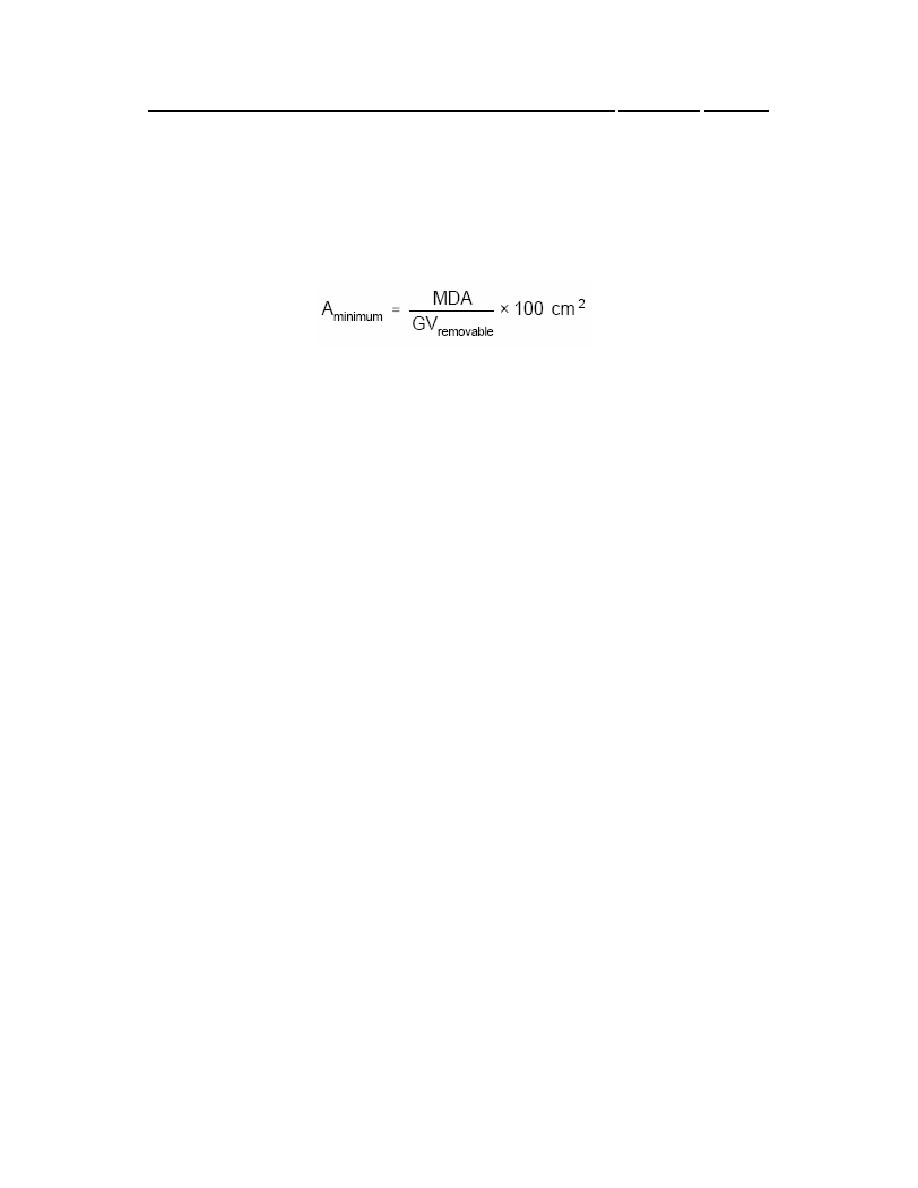 |
|||
|
|
|||
|
Page Title:
Surveys for Removable Contamination cont'd |
|
||
| ||||||||||
|
|  DOE-STD-1136-2004
Guide of Good Practices for Occupational Radiological Protection in Uranium Facilities
For transuranic radionuclides, the guideline values for removable contamination are lower than the
MDA of portable instruments. During a wipe survey, the surface area of the material must be large
enough that the quantity of radioactivity collected on the wipe will be greater than the MDA of the
instrument. Wipe surveys of areas smaller than this minimum surface area require more sophisticated
measuring instruments, such as a scaler measurement, and the entire surface of the material should be
wiped. The minimum area for using a large-area wipe survey is given by where GV is the guideline value
of the potential contaminant, given in Table 4-1.
The purpose of a smear survey is to locate and quantify removable contamination that is known or
suspected to exist. For small items, a smear may be used at any time to verify the item's contamination
status. A smear or swipe survey is performed by wiping a cloth, paper, plastic foam, or fiberglass disk
over a 100-cm2 area of the surface. The swipe should be taken with a dry medium using moderate
pressure. A common field practice is to use two fingers to press the swipe medium against the surface to
be swiped. The swipe is then moved along an "S" shaped path that has a nominal length of 8 in. (20 cm)
to 10 in. (25 cm).
When the potential contaminant emits alpha radiation, paper or fiberglass filter papers should be used
so that alpha activity is not attenuated by becoming imbedded in the wipe. To improve the detection limit,
smears may be taken over areas larger than 100 cm2. However, the size of the area smeared should be
limited to prevent buildup of material (radioactive or otherwise) that would attenuate alpha radiation. The
current practice at DOE facilities is to use the 100 cm2 area as the minimum size of objects being smeared.
Appropriate corrections should be made for objects smaller than 100 cm2
.
If contamination is detected during a scan survey for fixed contamination, a swipe survey for
removable contamination should be performed to determine if the contamination is fixed and to quantify
any removable contamination. If no contamination above the guideline values for removable
contamination in Table 4-1 is detected during the smear survey, the contamination is fixed, and the area
should be posted appropriately.
A smear survey may be used routinely to detect removable contamination, especially for
contamination surveys of radiological areas.
4-19
|
|
Privacy Statement - Press Release - Copyright Information. - Contact Us |